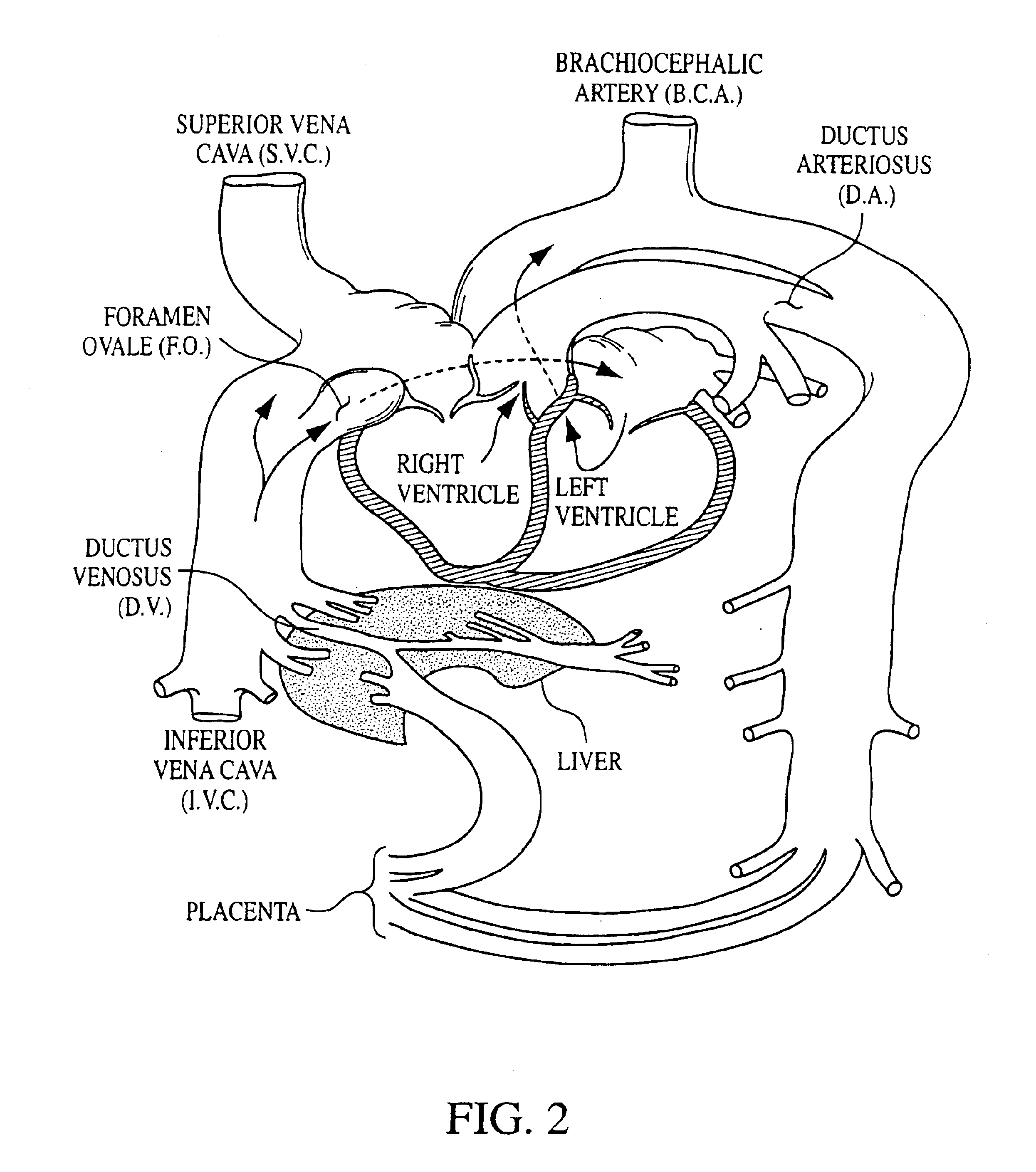Fetal pulse oximetry
a pulse oximetry and fetal technology, applied in the field of pulse oximetry, can solve the problems of several technical obstacles in the monitoring of fetal oxygen saturation, and achieve the effect of reducing measurement errors
- Summary
- Abstract
- Description
- Claims
- Application Information
AI Technical Summary
Benefits of technology
Problems solved by technology
Method used
Image
Examples
example 1
The Optical Shunt Problem
[0075]A significant percentage of the light emitted into the abdomen of a pregnant individual and back-scattered to the abdominal surface never passes through fetal tissues (FIG. 7). Consequently, a substantial portion of the light detected at the abdominal surface does not provide any information on fetal tissues. This background of maternal signals in which fetal information is embedded is known as the optical shunt problem. To provide a solution to the problem, computer simulations were performed. First, a discussion of the problem is provided.
[0076]For fetal pulse oximetry, the approach is to monitor fetal arterial blood oxygenation through the mother's abdomen. This means that the optical radiation from the sources must travel through the mother's tissue, pass through the amniotic fluid separating the fetus from the mother, reach the fetus, and then travel back to a detector located on the mother's abdomen. The detected signal contains information about...
example 2
[0098]The goal of this pilot clinical study was to indicate feasibility for non-invasively obtaining fetal arterial oxygen saturation values through the mother's abdomen. The subject population included women selected for the Non Stress Test (NST), which measures fetal heart rate accelerations associated with spontaneous fetal movements in utero. Initially, all women undergoing NST were eligible for this test. This study was reviewed and approved by the Institutional Review Boards of the University of Pennsylvania and written consent was obtained from all patients who participated. In addition to the ultrasound transducer and tocodynamometer employed in the NST test, the optical sensors were attached on either side of the patient's abdomen, with a light source on one side of the abdomen and the detector on the other side of the abdomen to afford light transmission through the uterus and fetus. Measurements were obtained at a single wavelength to demonstrate that the ...
example 3
Pulse Oximetry Using Two Wavelengths
[0116]Fetal arterial blood saturation is measured using the procedures and devices described in Example 2 above, with the following modifications (FIGS. 9 and 10). The emitter optode delivers light of two specific wavelengths, 700 nm and 830 nm. Both wavelengths of light are emitted and detected simultaneously. The intensity of back-scattered light of both wavelengths is detected at the abdominal surface and converted into electronic signals. A Fourier transform of the signals removes the maternal contribution so that the fetal contributions can be isolated. The fetal oxygen saturation (S) is then calculated using equations (7) and (8), which are described above.
PUM
 Login to View More
Login to View More Abstract
Description
Claims
Application Information
 Login to View More
Login to View More - R&D
- Intellectual Property
- Life Sciences
- Materials
- Tech Scout
- Unparalleled Data Quality
- Higher Quality Content
- 60% Fewer Hallucinations
Browse by: Latest US Patents, China's latest patents, Technical Efficacy Thesaurus, Application Domain, Technology Topic, Popular Technical Reports.
© 2025 PatSnap. All rights reserved.Legal|Privacy policy|Modern Slavery Act Transparency Statement|Sitemap|About US| Contact US: help@patsnap.com



